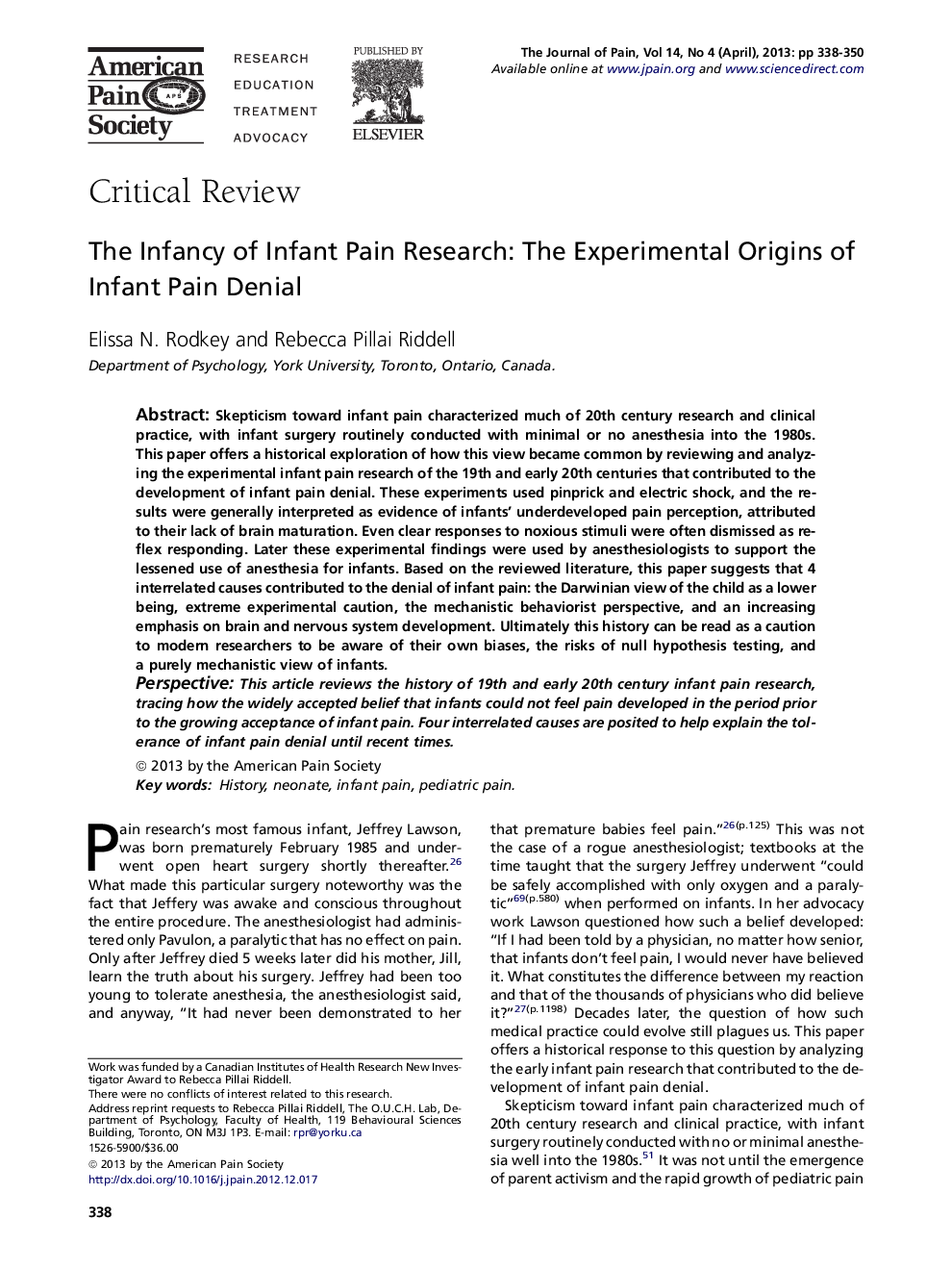| Article ID | Journal | Published Year | Pages | File Type |
|---|---|---|---|---|
| 5880876 | The Journal of Pain | 2013 | 13 Pages |
Skepticism toward infant pain characterized much of 20th century research and clinical practice, with infant surgery routinely conducted with minimal or no anesthesia into the 1980s. This paper offers a historical exploration of how this view became common by reviewing and analyzing the experimental infant pain research of the 19th and early 20th centuries that contributed to the development of infant pain denial. These experiments used pinprick and electric shock, and the results were generally interpreted as evidence of infants' underdeveloped pain perception, attributed to their lack of brain maturation. Even clear responses to noxious stimuli were often dismissed as reflex responding. Later these experimental findings were used by anesthesiologists to support the lessened use of anesthesia for infants. Based on the reviewed literature, this paper suggests that 4 interrelated causes contributed to the denial of infant pain: the Darwinian view of the child as a lower being, extreme experimental caution, the mechanistic behaviorist perspective, and an increasing emphasis on brain and nervous system development. Ultimately this history can be read as a caution to modern researchers to be aware of their own biases, the risks of null hypothesis testing, and a purely mechanistic view of infants.PerspectiveThis article reviews the history of 19th and early 20th century infant pain research, tracing how the widely accepted belief that infants could not feel pain developed in the period prior to the growing acceptance of infant pain. Four interrelated causes are posited to help explain the tolerance of infant pain denial until recent times.
